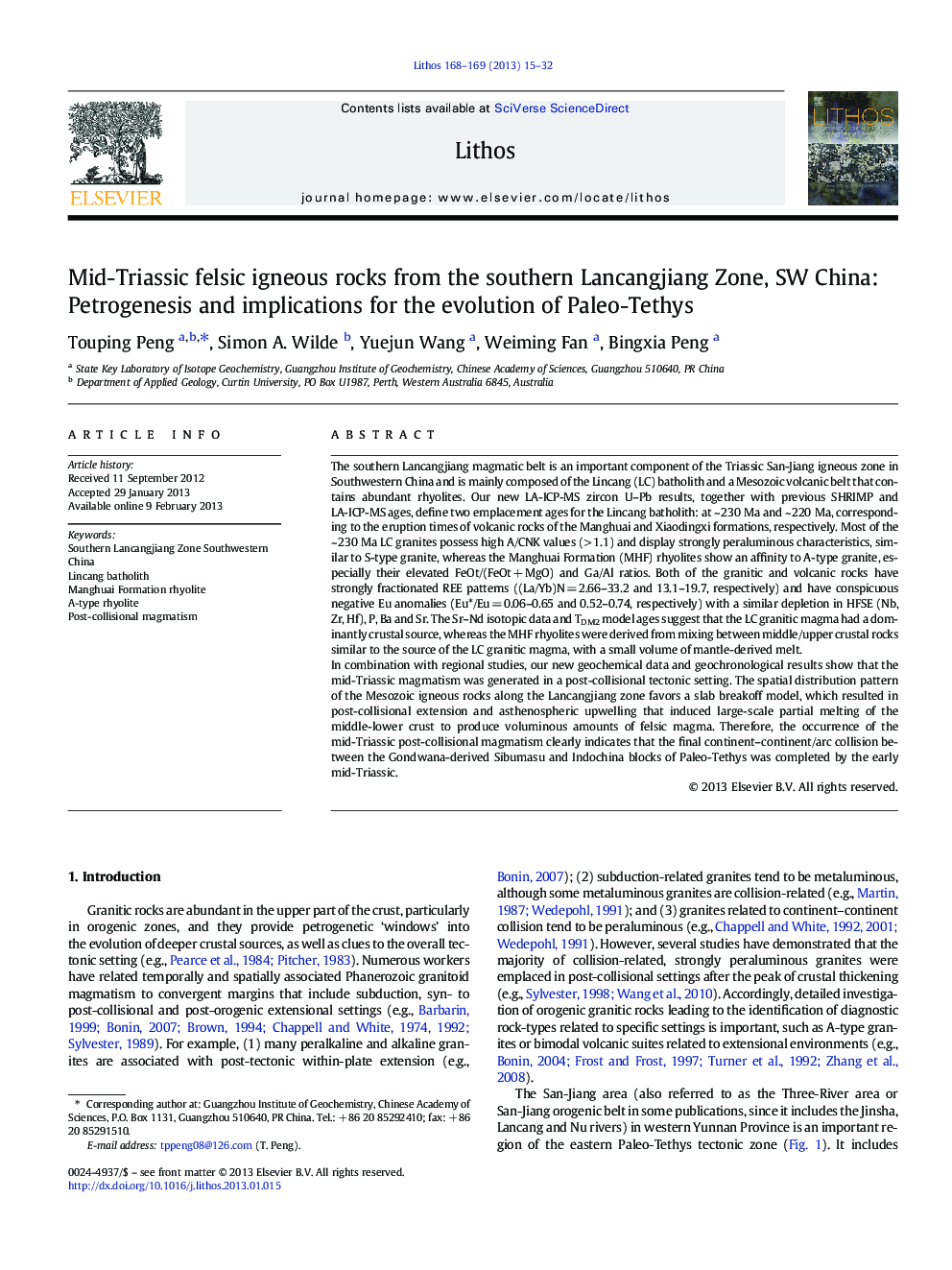| کد مقاله | کد نشریه | سال انتشار | مقاله انگلیسی | نسخه تمام متن |
|---|---|---|---|---|
| 4716306 | 1638693 | 2013 | 18 صفحه PDF | دانلود رایگان |

The southern Lancangjiang magmatic belt is an important component of the Triassic San-Jiang igneous zone in Southwestern China and is mainly composed of the Lincang (LC) batholith and a Mesozoic volcanic belt that contains abundant rhyolites. Our new LA-ICP-MS zircon U–Pb results, together with previous SHRIMP and LA-ICP-MS ages, define two emplacement ages for the Lincang batholith: at ~ 230 Ma and ~ 220 Ma, corresponding to the eruption times of volcanic rocks of the Manghuai and Xiaodingxi formations, respectively. Most of the ~ 230 Ma LC granites possess high A/CNK values (> 1.1) and display strongly peraluminous characteristics, similar to S-type granite, whereas the Manghuai Formation (MHF) rhyolites show an affinity to A-type granite, especially their elevated FeOt/(FeOt + MgO) and Ga/Al ratios. Both of the granitic and volcanic rocks have strongly fractionated REE patterns ((La/Yb)N = 2.66–33.2 and 13.1–19.7, respectively) and have conspicuous negative Eu anomalies (Eu*/Eu = 0.06–0.65 and 0.52–0.74, respectively) with a similar depletion in HFSE (Nb, Zr, Hf), P, Ba and Sr. The Sr–Nd isotopic data and TDM2 model ages suggest that the LC granitic magma had a dominantly crustal source, whereas the MHF rhyolites were derived from mixing between middle/upper crustal rocks similar to the source of the LC granitic magma, with a small volume of mantle-derived melt.In combination with regional studies, our new geochemical data and geochronological results show that the mid-Triassic magmatism was generated in a post-collisional tectonic setting. The spatial distribution pattern of the Mesozoic igneous rocks along the Lancangjiang zone favors a slab breakoff model, which resulted in post-collisional extension and asthenospheric upwelling that induced large-scale partial melting of the middle-lower crust to produce voluminous amounts of felsic magma. Therefore, the occurrence of the mid-Triassic post-collisional magmatism clearly indicates that the final continent–continent/arc collision between the Gondwana-derived Sibumasu and Indochina blocks of Paleo-Tethys was completed by the early mid-Triassic.
► The Lincang batholith consists mainly of ~ 230 Ma and ~ 220 Ma granites.
► The peraluminous Lincang granites were derived from a crustal source.
► The A-type rhyolites resulted from mixing of crust- and mantle-derive magma.
► The mid-Triassic magmatism formed in a post-collision setting.
Journal: Lithos - Volumes 168–169, May 2013, Pages 15–32